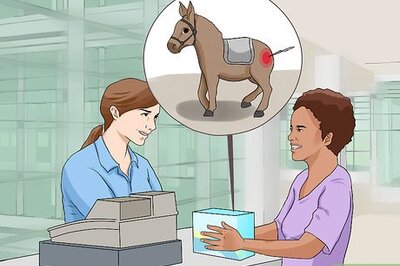
views
A decade after George Bush set the clock back for stem cell research, the science is showing signs of regeneration. Stem cells are mother cells that give rise to other cell types in the body. One of the more visible and vocal proponents of human embryonic stem cells (ES), Stephen Minger, says that the number of trials that are currently on suggests that the field is emerging from the shadow of skepticism and experimentation.
"When you see companies like Pfizer, GSK [GlaxoSmithKline], Johnson & Johnson and GE invest in stem cells and regenerative medicine, it suggests a level of maturity. It is still high risk, but it is a calculated risk," he says. Minger, who made the switch from a high-profile academician as director of the Stem Cell Biology Lab at Kings College, London, to the global head of Research & Development (R&D) for cell technologies at GE Healthcare, justifies his move as one for enabling cellular therapy. "I still do what I have done all my life - grow cells."
Indeed he is growing cells, not in a petri dish, but at an industrial scale that could one day supply zillions of stem cells to millions of people to repair diseased organs.
Minger grew up in Europe, studied in the US and returned to the UK in 1996 to pursue stem cell research. The field didn’t exist for the outside world then, he recalls. In the early 2000s, Minger’s group was the first to deposit a human ES cell line into the UK stem cell bank. Today, at GE, he has large scale supplies of these cells which are being tested for a variety of applications.
Between 1994 and 2006, 45 and 37 per cent of the drugs withdrawn from the market were due to cardio and liver toxicity respectively. The most recent casualty has been GSK’s diabetes drug Avandia, which proved toxic to the heart after it hit the market. Minger suggests that both pharma companies and the US FDA should test drugs on his new stem cell models for more accurate results. With his models, "you can tell early on whether this drug will cause problems in humans," he asserts. Chemists can then keep the parts that have produced the desired result and improve the defective part of the molecule, he points out.
Minger is screening dozens of molecules for a few drug companies including Genentech. Eventually, the industry may realise the value of investing in stem cell models rather than in expensive drug testing that fail at the later stage. But for now, Minger and GE are placing their bets on the encouraging results from studies on cellular therapy. This year, in August alone, two separate studies showed impressive improvements in patients with chemotherapy resistant blood cancer when they were injected with modified T-cells (protective blood cells in the body). In Europe, plans are afoot to undertake the largest ever clinical study on 3,000 cardiac patients.
So far, researchers around the world have used stem cells from different sources (human embryo, bone marrow, fat, skin) and followed different processes and protocols. However, with the European study on cardiac patients, the whole procedure will be standardised. "These are the kind of studies we should be doing for other diseases too," says Minger. And when that happens, not only will the demand for cells go up, their storage, analysis and imaging will also soar. It’s no wonder then GE is investing big time in cellular technologies.
In India, Minger is crusading, as he has been in the UK, for public banking of cord blood. If India and China could bank even 1 percent of their annual births, it could supply stem cells to the whole world, he says. But aren’t India’s resources limited? It is; which is why, he says, he is talking to some Indian trusts for support.
"My model is Devi Shetty [cardiac surgeon and promoter of Narayana Hrudalaya Hospitals], providing first world treatment at third world prices," he says. Minger has been visiting India regularly and is aware that "cellular therapy is not new here". "Balu [D. Balasubramanian, director of research at LV Prasad Eye Institute in Hyderabad] is my idol. His hospital has treated more than 3 million patients in five years, and mostly free," he says. Initially, though, the cost of cellular technology will be high, "we will bring it down," says Minger.
Balasubramanian believes GE will have a huge market in India once the studies on cardiac diseases and stroke, sponsored by the department of biotechnology, are completed. "More hospitals will come forward and it’ll become legal by then," he says. Until 2010, Balasubramanian was the founder chairman of the National Taskforce on Stem Cell Research in India.
But what will happen to Minger’s goal and GE’s aspirations if science lags behind technology - if clinical studies don’t succeed? "You can’t even imagine how risk-averse I am. I have grown cells for 20 years and never put them in humans, but now I see the results. I have 32 projects worldwide; I monitor them every week and I closely follow the thought leaders in the field," says Minger.



















Comments
0 comment